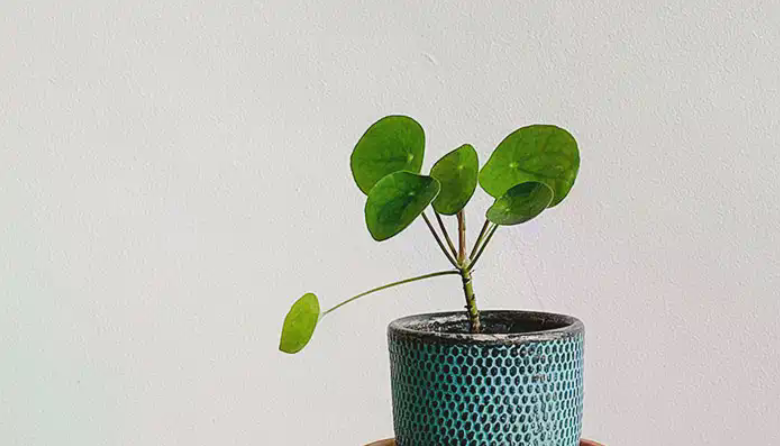There are plenty of benefits to owning an energy efficient home, and the potential to access a cheaper green home loan is one of them.

If you're concerned about your carbon footprint and the environment, your home might be among the first places you could reduce your impact. And owning a sustainable home could help you save on interest, thanks to some green home loan offerings.
Residential buildings - that is, people's homes - account for around a tenth of Australia's total carbon emissions. They're also behind nearly a quarter of the country's electricity usage.
Building a more energy efficient home, or improving the energy efficiency of your existing home, could help reduce your bills, your carbon footprint, and potentially even your home loan repayments.
Green Home Loans: Explained
Green home loans are very similar to regular home loans, but they typically boast one notable difference: They often offer lower or discounted interest rates.
The catch? The home a person is borrowing against must meet set energy efficiency, sustainability, or resilience standards.
That might mean it is:
- solar powered
- draught sealed
- well insulated
- water efficient
- well ventilated
- resilient against climate change
Of course, such environmentally friendly factors will likely also see homeowners saving on bills and living in greater comfort.
Some of the major banks offer discounted home loan interest rates for certain owners of energy efficient houses, however recently they have pivoted into low-rate loans for green purchases, rather than mortgages for the whole house.
Customer-owned banks Gateway Bank, Regional Australia Bank, and Bank Australia also offer green home loans, as do non-bank lenders Firstmac and loans.com.au, as well as credit union Summerland Bank.
Usually, lenders require some conformity to what is known as the NatHERs Green Star Rating and have your home meet a minimum of 7 stars, explained below.
Other 'Green' Loans
Many lenders offer what can be dubbed a 'green loan'. Such 'green loans' are essentially personal loans designed to be used for an environmentally friendly purpose. Say, installing solar panels on your roof or energy-efficient window treatments.
Some car loan lenders also offer reduced interest rate loans for those borrowing to buy a low emission or electric vehicle.
Green Home Loan Rates
Like with other home loan products, the interest rates available to those hunting for a green home loan can vary markedly. Though, they are generally lower than those of their traditional counterparts.
But why would lenders offer lower rates for sustainable homes? Well, doing so might help them meet their climate targets.
A large chunk of the emissions from assets financed by Aussie banks often come from their home lending portfolios. Meanwhile, banks and lenders are aiming to reduce such emissions in their quest to become more sustainable or to reach net zero.
Thus, some might find it worthwhile to encourage owners of more sustainable houses to borrow through them by offering lower-cost loans for energy efficient homes.
What is a NatHERS or Green Star rating?
Banks and lenders will generally ask those applying for a green home loan to certify their home has received a rating from the Nationwide House Energy Rating Scheme (NatHERS) or the Green Building Council Australia.
NatHERS is an Australian Government scheme that measures the energy efficiency of a building and provides a rating of up to ten stars.
Some homeowners and hopefuls might not realise new homes, or those undergoing serious renovations, need to meet certain energy efficiency targets under the National Construction Code.
Often, that means they need a home energy rating from NatHERS. The Australian Government is also funding the expansion of NatHERS to offer rating for existing homes.
Meanwhile, the Green Building Council Australia assesses buildings for their energy efficiency and, if they pass a certification process, provides a Green Star rating.
Pros and Cons of Green Home Loans
Pros
Sustainability
Making more sustainable choices can have major ramifications on environments, communities, and individuals.
If you're concerned about climate change, your carbon footprint, or your mounting energy bills, making more sustainable choices - such as building or buying a 'green' home - could help ease the burden.
Lower rates
Speaking of burdens, interest rates can be a burden to people's back pockets.
Thus, accessing a lower interest rate by signing up to a green home loan could have the potential to make a positive impact on a person's financial situation.
Higher loan-to-value ratio accepted
Traditional home loans typically demand a homeowner either has an 80% loan-to-value (LVR) ratio - meaning they offer a 20% deposit - or pays lenders mortgage insurance (LMI).
However, there are numerous green home loans that allow a borrower putting down a deposit of just 10% to dodge LMI. That could save certain mortgage-holders tens of thousands of dollars.
Cons
Eligibility
Owning a 'green' home in itself isn't a downside of a green home loan. In fact, it could be a blessing to both your comfort and energy bills during Australia's harsh summers and dire winters.
However, energy efficient homes are typically more expensive to build and rarer to find on the market, at least for now. Thus, they can cost more initially.
Fewer lenders
Another consideration that could be worth contemplating is the fact that fewer lenders currently offer green home loans than do traditional home loans. That means there's less choice for those hoping to secure a green home loan.
How to Make Your Home More Energy Efficient
It's possible to retrofit sustainable technology or fixtures to existing houses to make them more energy efficient. And doing so needn't be difficult.
One of the easiest ways to increase the energy efficiency of your home is blocking draughts. By doing so, you can rest assured knowing you're keeping in more heat during winter and more cool air during summer.
According to Sustainability Victoria, easy ways to do block draughts include:
- Close doors to unused rooms and use draught stoppers
- Block chimney draughts
- Seal evaporative cooling outlets and exhaust fans
- Seal gaps around doors and windows, walls and floors
Source: Sustainability Victoria
Adding solar panels to your roof can also help make your home more sustainable. And, they'll likely save you some coin after an initial outlay too.
Finally, removing your home's gas connection could help to reduce your carbon footprint.
How Can Sustainable Features Increase Your Property's Value?
In addition to cash savings and green points for the environment, sustainable features can also increase the value of your home.
A report by Domain noted an increasing number of environmentally conscious buyers are driving the demand for energy efficient dwellings in Australia. The Sustainability in Property Report 2024 revealed green homes attract 16% more listing views and spend 4% less time on the market than non-energy efficient homes.
Sustainable features such as solar panels and double-glazed windows are getting the attention of home buyers. These value-adding features add a price premium to these dwellings, averaging $112,000 (14.5%) for houses and $70,000 (11.7%) for units.
This means buyers are willing to pay more than the selling price for green homes in exchange for lifestyle benefits and reduced energy and maintenance costs.
Premium pricing on energy efficient houses is noted across all capital cities.
|
Capital city |
Price premium |
Price difference |
|
Sydney |
23.1% |
$330,250 |
|
Melbourne |
28.8% |
$241,750 |
|
Brisbane |
16.2% |
$125,000 |
|
Adelaide |
10.7% |
$77,725 |
|
Perth |
17.0% |
$107,000 |
|
Canberra |
5.8% |
$52,500 |
|
Hobart |
11.2% |
$77,500 |
|
Darwin |
10.5% |
$58,750 |
Energy efficient units also fetch more than their standard counterparts.
|
Capital city |
Price premium |
Price difference |
|
Sydney |
11.7% |
$95,000 |
|
Melbourne |
22.0% |
$118,000 |
|
Brisbane |
10.7% |
$59,678 |
|
Adelaide |
8.0% |
$37,206 |
|
Perth |
14.6% |
$60,000 |
|
Canberra |
5.8% |
$30,000 |
|
Hobart |
- |
- |
|
Darwin |
7.4% |
$30,000 |
If you're looking for more reasons to build or buy a green home, just look at it this way - when it comes time you sell your property, you could potentially sell it faster and for tens of thousands of dollars more than you would for a standard home, while also saving some money on power bills in the process.






